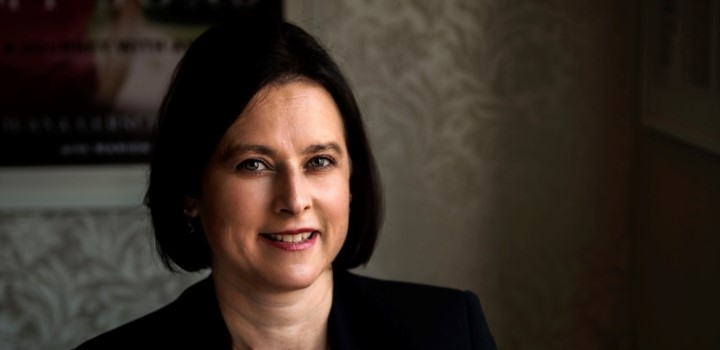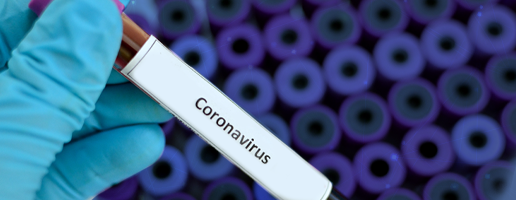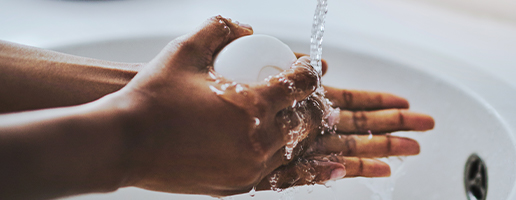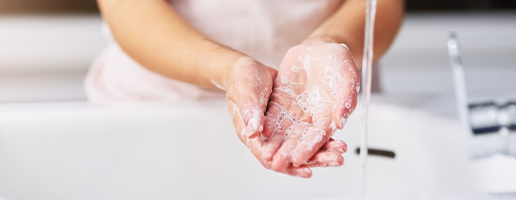COVID-19 and reopening schools for children with autism and other special needs

Ilana Gerschlowitz is director of the Star Academy, which caters for the education needs of children on the autism spectrum or with a related disorder. She shares key insights into safely reopening these schools during the COVID-19 pandemic.
Ilana Gerschlowitz is also the author of a book called Saving My Sons: A Journey with Autism. Listen to her insights on the dynamics that need to be considered when safely reopening schools that cater for children with special needs here:
- Did you know that this podcast forms part of Discovery’s Understanding COVID-19 podcast series? Visit our podcast page to listen to key conversations relevant to every area of life in the context of the pandemic.
A look at some of the key insights from Ilana’s podcast
It has been difficult enough for children to return to mainstream schools. But for children with special needs, Ilana says there are even more protocols to put in place. Seemingly simple tasks like getting the children to wear a face mask can be a difficult. But Ilana’s message is always one of hope and innovation so you can get through every challenge.
“I know many of us who work in the special needs field have wrestled with how best to keep children with special needs safe and how we would be able to deliver the same education programmes as before,” she says.
She says the first important factor to note is that the COVID-19 pandemic has changed the landscape of special needs teaching.
“For children with autism or a developmental delay, time is of the essence. Every school day is important and counts towards their continued development and skills acquisition.”
Ilana says closing schools impacted these special children who work very hard every day to acquire skills that come naturally to others. “Missing school for these kids is simply not an option. But at the same time we have to balance the many limitations that the autism spectrum or a related disorder brings to the table,” she adds.
A modified to-do list
“We had to consider all of the preventive measures that have been prescribed for schools that cater for the needs of typical learners – and go further,” she says.
Ilana suggests the following:
- Calculate your risk: Parents must make the decision to send their child back to school in consultation with their healthcare providers while the pandemic is a prominent part of our lives. Children with special needs can have compromised immune systems, be prone to seizures or have health conditions that may put them at high risk of serious illness if they contract COVID-19.
- Consider the options: Home tutoring has become an option for some parents and children. Zoom-based online classes have been very effective for some kids, but nothing replaces one-on-one personal interaction, especially for younger children who don’t yet have skills like compliance, eye contact, imitation or sustained attention.
- Consult all the experts: “During the COVID-19 pandemic we have been fortunate to be guided by a specialist in occupational health and safety who is familiar with and keeps up to date with the guidelines and stipulations of the World Health Organisation, our local National Institute for Communicable Diseases as well as the Department of Health’s legislation relating to the Disaster Management Act’s Regulations. We have created an organic system that we built in line with regulations, but also takes into account best and safe practice for the children and instructors.
At the Star Academy schools, COVID-19 policies and procedures include: temperature checking, mask and face shields and sanitising. Parents keep their distance from the school and complete a screening form each day. In the school, social distancing is enforced.
Masks for sensitive wearers
“We encourage the children to wear masks. Every child has a desensitisation programme, which is aimed at teaching the children to tolerate the mask. As the children become more comfortable with the mask, the time we expect them to wear the mask is extended,” says Ilana.
The approach to getting children to wear a mask is designed for each child. “For kids with sensory challenges, it’s not easy. Some kids will take them off or won’t want to put them on.”
Here are her tips to help parents convince children who have special needs, or don’t, to wear their masks:
- Practice before you need the child to wear the mask when out and about.
- Make it fun. Start by creating an activity that is fun, like watching TV. Turn on their favourite show and require them to wear the mask for the whole episode.
- Start with small goals. Try wearing a mask for one minute and then gradually increase the time while they engage in their favourite activity. Use rewards to reinforce the behaviour.
- Set a timer. Have a beeper that goes off when they can remove the mask.
- Let them choose. We may not have a choice about wearing a mask, but let the child choose which mask they prefer to wear.
- Set an example. For some kids, it works to read them a story about wearing a mask and for others, show them how we wear a mask so they can imitate you.
“Most importantly, stay calm when teaching children to wear a mask. As the saying goes: ‘the brightest rainbows follow the darkest rainstorms’. Rainbows are a symbol of hope. Hold on to hope and stay safe! We learn as we go and we are all doing our best,” she says.
Interested in knowing more? Ilana Gerschlowitz: Supporting a child who has autism through COVID-19
Contact Ilana at ilana@thestaracademy.co.za
All medical information found on this website including content, graphics and images, is for educational and informational objectives only. Discovery Health publishes this content to help to protect and empower all South Africans by promoting a better understanding of COVID-19.
Find a healthcare professional near you
Find a doctor or hospital near you online or by using the Discovery app.
Related articles

Outbreak of the 2019 novel coronavirus
The 2019 novel coronavirus (2019-nCoV) has caused an outbreak of fatal respiratory illness first detected in Wuhan, China. This is a completely new strain with no vaccines available. The best way to prevent infection is to avoid being exposed to this virus.

Understand the Novel Coronavirus (COVID-19) and prevent infection
No country is immune to the spread of the Novel Coronavirus - officially named COVID-19 by the World Health Organization (WHO). The outbreak has reached pandemic proportions and been declared a global public health emergency.

Novel Coronavirus - wash your hands of the threat
As toddlers, we learnt to wash our hands. But, did we ever master the skill to the extent that is needed to wash pathogens off our hands, and save lives? Multiple studies show people don't wash their hands at the right times, in the right way or for the right amount of time. We contaminate the things and people we touch with the germs we carry on our hands.